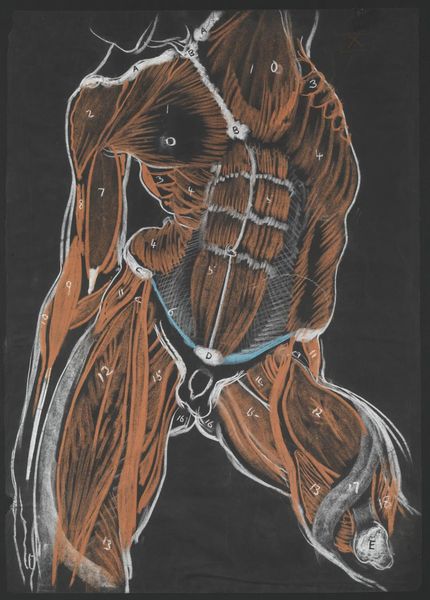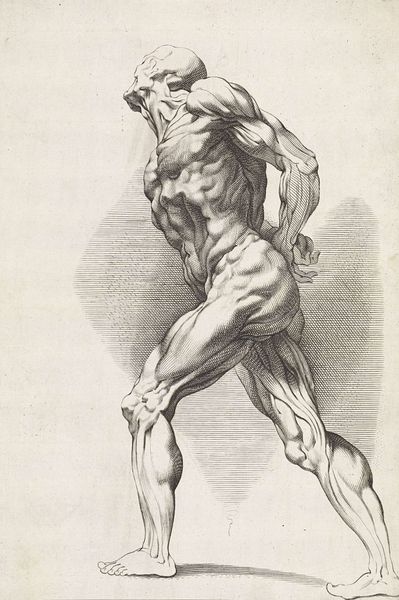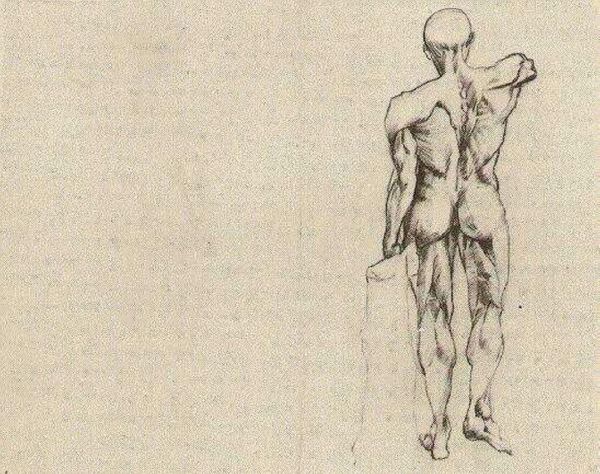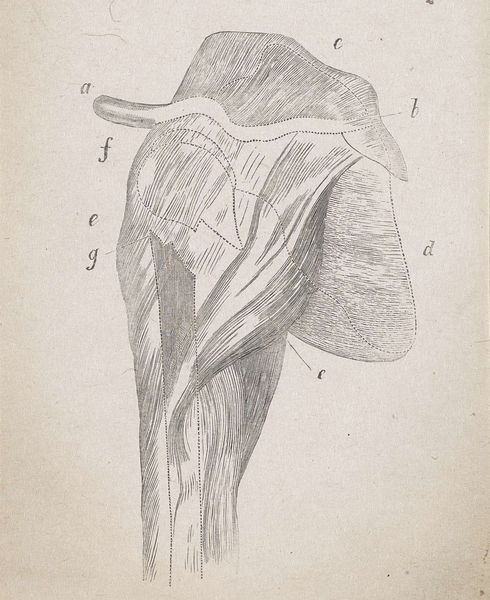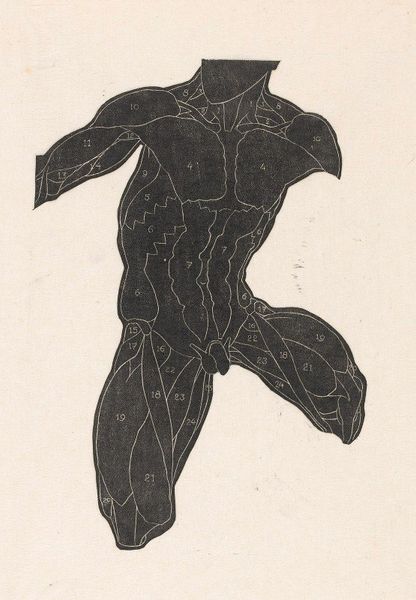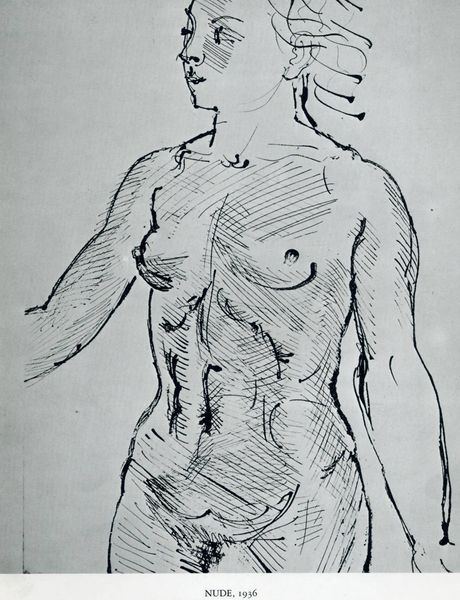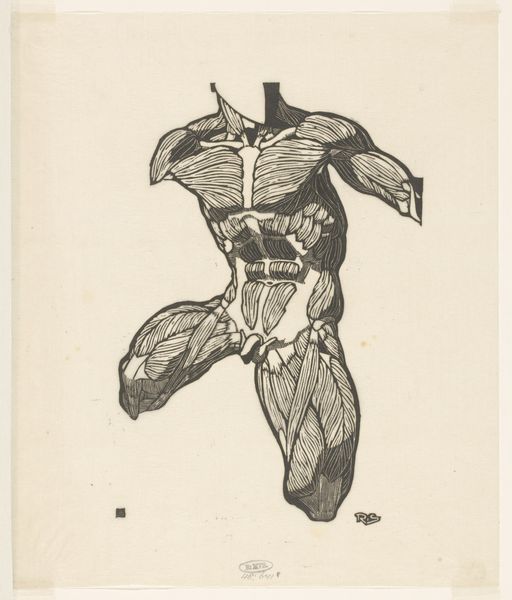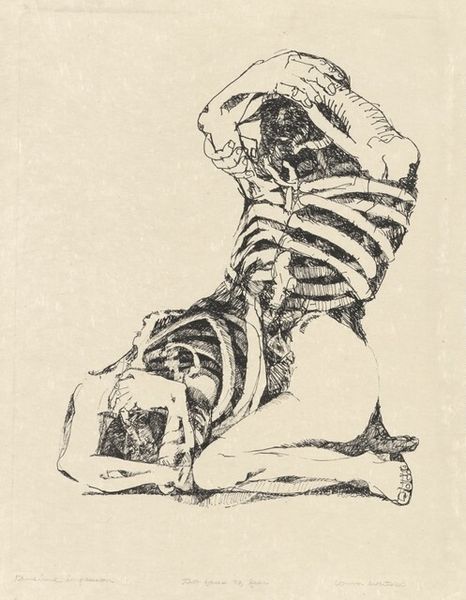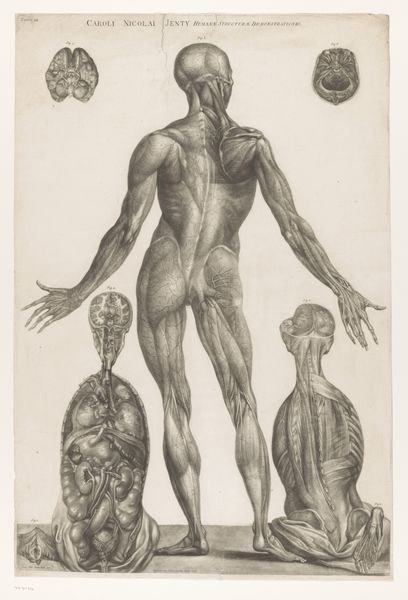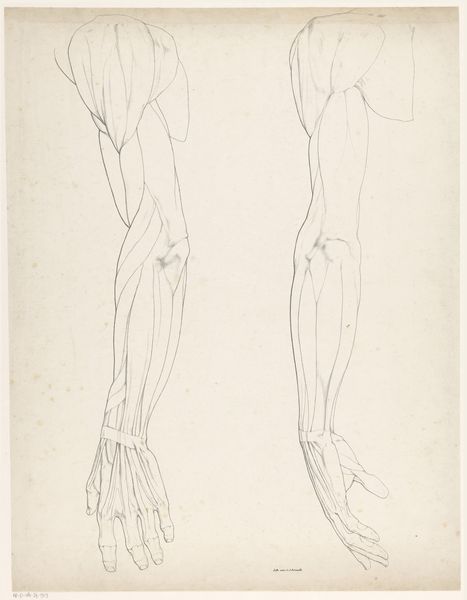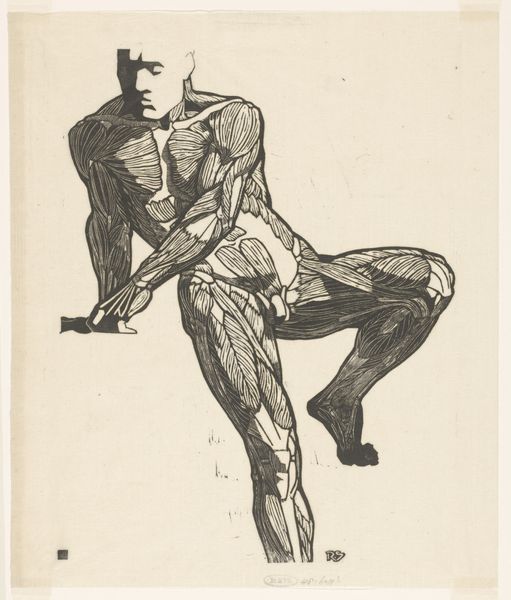
drawing, print, woodcut
#
portrait
#
drawing
# print
#
old engraving style
#
figuration
#
woodcut
#
line
#
nude
Copyright: Public Domain: Artvee
Curator: This print is titled "Anatomische studie van de rugspieren van een man," or "Anatomical study of the back muscles of a man" by Reijer Stolk, created in 1906. Editor: Wow, a very stark, almost severe image. The sharp lines give it such a high-contrast look. The way the muscles are rendered—it’s incredibly detailed, like looking at architectural blueprints of the human body. Curator: Absolutely. Stolk's use of the woodcut technique here is fascinating. Considering printmaking involved a laborious process of carving the design into a block of wood. Think about the social context of scientific inquiry during the early 20th century when there was renewed interest in classical aesthetics that could be replicated. Editor: It's interesting you bring up replication. The stark contrast and line work are key to this effect, like how the artist used shadow and negative space— the back's musculature—creating a kind of map. Semiotics! The body as a readable text. Curator: Exactly, and that text tells us something about Stolk's influences, perhaps academic traditions. What do we learn about Dutch anatomical study in this period by observing Stolk making reference to classical artistic norms? Furthermore, what can the existence of numerous prints tell us about production? Editor: I get your point, but even removed from that history, there is so much here about symmetry, about proportion, and about how light reveals form, or, more accurately in this instance, an absence of it does. The deep shadows convey volume and give us clues of Stolk's approach. It is a stark aesthetic that almost borders on abstract expressionism, maybe. Curator: Maybe abstract expressionism is going too far for the early twentieth century, but its hard not to recognize the influence this might have on later movements that break boundaries between academic depictions of the human form and an interest in capturing expressionist, abstract concepts in our art. Editor: Good point. I hadn’t considered it quite that way, but looking at it from your angle provides great insight! Curator: And your formal reading makes us see Stolk’s craft in terms of art history, which shows his importance to visual culture!
Comments
No comments
Be the first to comment and join the conversation on the ultimate creative platform.
